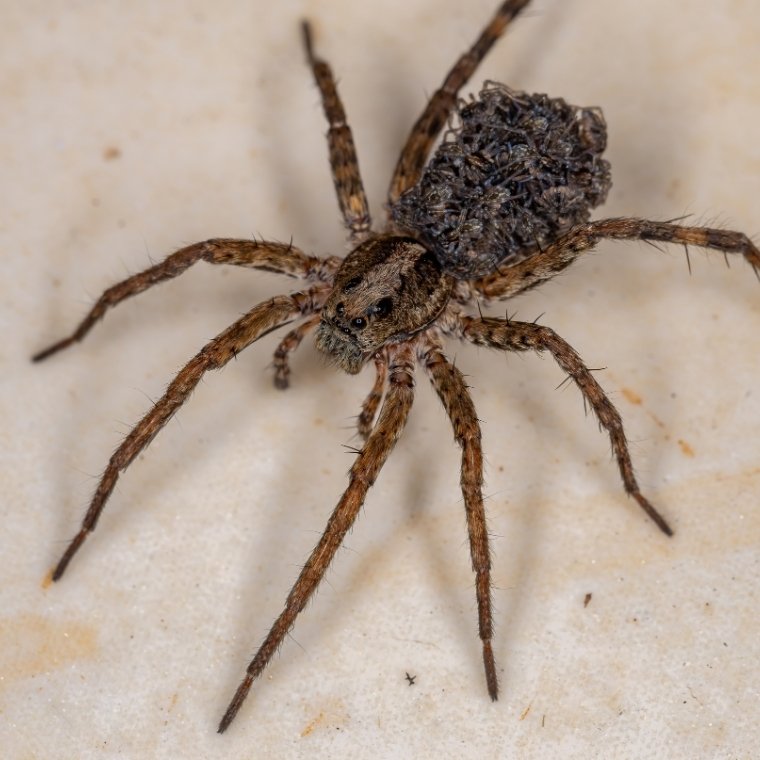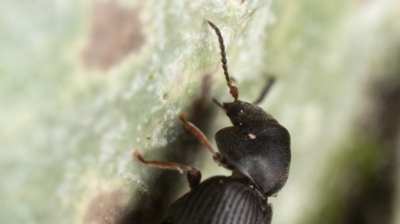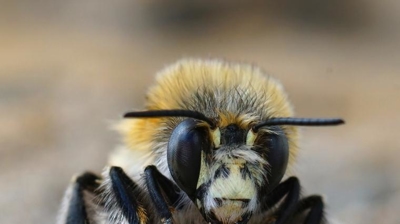
Spiders

Are Spiders Harmful?
Spiders are often beneficial because they help control insect populations, but they can also be considered harmful in several ways:
- Venomous Bites – Some species, such as the black widow and brown recluse in North America, have venom that can cause serious medical issues, including pain, tissue damage, or systemic reactions. While most spider bites are harmless, some spider bites may require medical treatment.
- Allergic Reactions – Some people are allergic to spider venom, and for these people, even bites from non-dangerous species can cause severe reactions, including anaphylaxis. Additionally, spider webs and shed exoskeletons can trigger allergies in some sensitive individuals.
- Risk to Pets and Livestock – While rare, some venomous spiders can pose a threat to small pets and livestock, potentially leading to illness or even death if bites go unnoticed and untreated.
- Infestation Issues – While individual spiders are not typically a problem, certain species can reproduce quickly and become a nuisance, especially in homes, garages, and warehouses.
- Aesthetic Impact – Some spider species build large webs or nests in and around buildings, leading to aesthetic issues and requiring frequent cleaning. Their presence in large numbers can also indicate underlying insect infestations, as spiders thrive where food sources are abundant.
- Psychological Impact (Arachnophobia) – Many people suffer from an intense fear of spiders, known as arachnophobia. This fear can lead to panic attacks, anxiety, or avoidance behaviors that interfere with daily life.
Spider Control
Our professional spider control is a smart investment if you’re dealing with frequent spider activity, unexpected infestations, or want peace of mind that your home or business is fully protected. While some spiders are harmless and even help reduce other insect populations, others can pose health risks or create unsettling living and working environments. Here are some of the reasons to consider our professional spider control:
- Accurate Identification & Targeted Treatment: Not all spiders are the same. Some species, like the black widow or brown recluse, can deliver venomous bites with serious medical consequences. Our professionals can identify the type of spider and implement the safest, most effective treatment strategy instead of relying on guesswork.
- Reduces Health Risks: Spider bites are uncommon but can be painful, trigger allergic reactions, or in rare cases require medical attention. By eliminating dangerous species and reducing spider presence, our professionals lower the risk of accidental encounters.
- Eliminates Food Sources: Spiders are attracted to areas with abundant insects. Our professional pest control doesn’t just address spiders; it also tackles the underlying pest issues that attract them in the first place, such as flies, ants, and mosquitoes.
- Long-Term Prevention: DIY sprays may kill a few visible spiders but rarely provide lasting protection. Our professionals use integrated methods, including perimeter treatments, exclusion techniques, and monitoring, to ensure long-term control and prevent re-infestations.
- Protection for Sensitive Areas: Homes with children, pets, or individuals with arachnophobia benefit greatly from professional control. Businesses—especially restaurants, retail shops, or offices—also need spider-free spaces to maintain safety standards and customer confidence.
- Expert Knowledge of Entry Points: Spiders often gain access through cracks, gaps, and hidden spaces. Our professionals know where to look, how to seal entry points, and how to apply treatments in a way that minimizes disruption while maximizing effectiveness.
- Peace of Mind: Knowing your property is spider-free—and protected from future infestations—provides reassurance that DIY efforts can’t match.
Learn more: How To Get Rid Of Spiders
Learn more: Natural Spider Repellents
Types of Spiders
There are many types of spiders, with over 40,000 species identified worldwide. Here are some of the main types of spiders:
- Banana Spiders: Banana spiders are large, colorful orb-weaving spiders known for their impressive golden webs. Despite their intimidating size, they are generally non-aggressive and their venom is harmless to humans.
- Black Widow Spiders: Black widow spiders are shiny black spiders identified by their red hourglass marking. They are highly venomous, and their bites can cause severe pain and muscle cramps, though fatalities are rare.
- Brown Recluse Spiders: Brown recluse spiders are light to dark brown spiders with a distinctive violin-shaped mark on their back. Their venom can cause serious skin damage, making them one of the most medically significant spiders in the U.S.
- Brown Widow Spiders: Brown widow spiders are light brown to tan spiders with an orange hourglass marking. They are less aggressive than black widows, but their venom is stronger.
- Camel Spiders: Camel spiders also known as wind scorpions or sun spiders, are fast-moving arachnids with large jaws. Though they look intimidating, they are non-venomous and not true spiders.
- Cellar Spiders: Cellar spiders are thin-bodied spiders with long, delicate legs. They prefer dark, damp areas like basements and are harmless to humans.
- Cobweb Spiders: Cobweb spiders are small to medium-sized spiders that build irregular, sticky webs in corners and undisturbed areas. They are generally harmless to humans and help control other pests.
- Crab Spiders: Crab spiders are ambush predators that resemble crabs and can walk sideways. They often blend into flowers or foliage, waiting to catch unsuspecting insects.
- Daddy Long Legs Spiders: Harvestmen, often called daddy longlegs, are arachnids with small, round bodies and long, thin legs. Unlike true spiders, they lack venom and silk glands and are completely harmless.
- Fishing Spiders: Fishing spiders are large, semi-aquatic spiders that hunt on the surface of water. They can catch insects and even small fish but are shy and rarely bite humans.
- Funnel Web Spiders: Funnel web spiders build sheet-like webs with a funnel-shaped retreat where they hide and wait for prey. They are fast, reclusive hunters, and most species are harmless to humans.
- Grass Spiders: Grass spiders are quick, brownish spiders that build funnel-shaped webs in grass and shrubs. They are shy, non-aggressive, and rarely bite humans.
- Hobo Spiders: Hobo spiders are brown, fast-moving spiders that build funnel-shaped webs near the ground. Their bites can cause mild to moderate skin irritation, but they are generally not dangerous to humans.
- House Spiders: House spiders are common, small to medium-sized spiders that live indoors, often in corners or basements. They build messy webs and are harmless to humans.
- Huntsman Spiders: Huntsman spiders are large, fast-moving spiders with long legs that can spread sideways like a crab. They are non-venomous to humans and often help control insect populations.
- Joro Spiders: Joro spiders are large, brightly colored orb-weaving spiders native to Asia. They build expansive, yellow-striped webs and are generally harmless to humans.
- Jumping Spiders: Jumping spiders are small, agile spiders known for their excellent vision and ability to leap long distances. They actively hunt prey and are harmless to humans.
- Orb Weaver Spiders: Orb weaver spiders are spiders that construct large, circular webs to catch prey. They are typically non-aggressive and play a beneficial role by controlling insect populations.
- Sac Spiders: Sac spiders are small, pale-colored spiders that build silk sacs to rest in rather than webs to catch prey. They are nocturnal hunters and their bites can cause mild skin irritation.
- Tarantulas: Tarantulas are large, hairy spiders known for their impressive size and slow movements. They are generally non-aggressive, and while their bites can be painful, they are rarely dangerous to humans.
- Wolf Spiders: Wolf spiders are robust, fast-moving hunters that do not spin webs to catch prey. They rely on speed and stealth and are generally harmless to humans, though their bite can cause mild irritation.
What Do Spiders Look Like?
Spiders exhibit a wide range of appearances due to the vast diversity of species, but they share some common characteristics that help distinguish them from other arachnids and insects. Here's what spiders generally look like:
- Body Structure: Spiders have two main body parts: the cephalothorax (head and thorax combined) and the abdomen. Their bodies are covered with a hard exoskeleton. Most species have a distinct, narrow waist called the pedicel that separates the cephalothorax from the abdomen.
- Legs: Spiders typically have eight long, jointed legs attached to the cephalothorax. These legs are often covered in fine hairs and may vary in length among different species.
Eyes: Spiders can have multiple eyes, often arranged in various patterns depending on the species. Some spiders have excellent vision, while others rely more on other senses like touch and vibrations. - Mouthparts: Spiders have specialized mouthparts called chelicerae, which may include venomous fangs used for hunting and defense.
- Silk-Producing Structures: Most spiders possess silk-producing glands located in their abdomen. They use silk for building webs, creating egg sacs, and other purposes.
- Coloration: Spider colors vary widely and can include shades of brown, black, gray, and various patterns such as stripes, spots, or vibrant colors, depending on the species.
- Size: Spider sizes can range from a few millimeters to several inches, with some of the largest spiders, like tarantulas, being quite substantial.
- Variation in Adaptations: Spiders exhibit an array of adaptations based on their lifestyles. For example, orb-weaving spiders are known for their circular, intricate webs, while wolf spiders are typically robust and well-camouflaged ground hunters. Jumping spiders are often characterized by their compact bodies and impressive leaping abilities.
Not all spiders look the same, and their appearances can be highly specialized to suit their ecological roles. Some spiders are masters of camouflage, while others may display warning colors to deter predators. Understanding the specific characteristics of a spider can often be essential for identifying its species and behavior accurately.
Learn more: What Do Spider Eggs Look Like?
Learn more: Do Spiders Fly?
Where Are Spiders Found?
Spiders can be found in a wide range of environments, but they tend to thrive in areas that provide shelter, food (insects), and a stable climate. The most common places where you are likely to encounter spiders include:
Inside Your Home:
- Basements & Crawl Spaces – Dark, damp, and rarely disturbed, making them ideal hiding spots.
- Attics & Storage Areas – Cardboard boxes, old furniture, and clutter provide shelter.
- Corners & Ceilings – Spiders build webs in room corners, behind furniture, and near windows.
- Bathrooms & Laundry Rooms – Moisture attracts certain spider species.
- Garages & Sheds – Dark spaces with little activity attract spiders looking for insects.
Outside & Around Your Property:
- Porches, Decks, & Patios – Spiders build webs near lights to catch flying insects.
- Gardens & Shrubs – Overgrown vegetation, mulch, and woodpiles provide hiding spots.
- Woodpiles & Stacked Items – Common places for spiders like the brown recluse to hide.
- Eaves, Roof Overhangs & Gutters – Web-building spiders often set up in sheltered outdoor areas.
- Under Rocks, Logs, & Debris – Ground-dwelling spiders seek out these hiding places.
If you're trying to prevent or control spiders, reducing clutter, sealing entry points, and keeping areas clean and dry can help minimize their presence.
Learn more: What Attracts Spiders Into Your Home?
Spider Diet
Spiders are carnivorous and primarily feed on insects and other small arthropods. Their diet typically includes flies, mosquitoes, moths, beetles, crickets, and ants. Some larger spider species, such as tarantulas, can consume small vertebrates like lizards, frogs, and even small birds or rodents.
Spiders use their silk webs or hunting techniques to capture prey. Web-building spiders, like orb-weavers, trap insects in their sticky silk and inject venom to immobilize them before digesting them externally with enzymes. Hunting spiders, such as wolf spiders and jumping spiders, actively stalk and pounce on their prey.
A few specialized species have unique diets. For example, the Bagheera kiplingi, a type of jumping spider, primarily feeds on plant matter, making it one of the very few vegetarian spiders.
Learn more: What Do Spiders Eat?
Spider Life Cycle
The life cycle of spiders typically consists of several stages, from egg to adult. While there can be variations among different spider species, the following is a general overview of the life cycle of spiders:
- Egg Stage: The life cycle begins with the laying of eggs by the female spider. The eggs are usually enclosed in a silk sac, which may vary in size, shape, and color depending on the species. The female spider may guard or protect the egg sac to some extent, especially in species with maternal care.
- Spiderling Stage: After an incubation period, spiderlings hatch from the eggs. Spiderlings are tiny and undergo several molts to grow. These early stages are also known as instars. Spiderlings usually emerge with all their legs and body parts but are underdeveloped compared to adult spiders.
- Juvenile Stage: As spiderlings grow, they continue to molt, shedding their exoskeleton to accommodate their increasing size. The number of molts varies depending on the species. During this stage, the spiders develop more adult-like features and may begin to display species-specific behaviors.
- Sub-Adult Stage: After several molts, spiderlings progress to the sub-adult stage. They become more recognizable as miniature versions of adult spiders, with complete sets of legs and other characteristic features. At this point, they may also start displaying behaviors related to hunting and web-building, depending on their species.
- Adult Stage: Once a spider reaches maturity, it is considered an adult. Adult spiders are typically fully developed and capable of reproducing. Adult spiders engage in mating, and females may lay eggs to initiate the next generation's life cycle.
- Mating and Reproduction: Mating involves complex courtship rituals and behaviors, often including the transfer of sperm from the male to the female. The specifics of mating can vary greatly between spider species. After mating, the female may produce one or more egg sacs, each containing a batch of eggs. The female may provide some level of care for the eggs and spiderlings, which can include guarding the egg sac or even carrying spiderlings on her back in some species.
- Lifespan: Adult spiders have a limited lifespan that varies depending on the species. Some may live for a few weeks, while others can live for several years. Once they reach the end of their lifespan, adult spiders will die, often after producing and caring for the next generation.
The duration of each life stage, the number of molts, and the specific behaviors can vary significantly among spider species. Some spiders have more complex life cycles and behaviors, while others have simpler ones. Understanding the life cycle of specific spider species is crucial for researchers and enthusiasts interested in studying them in more detail.


Hear From Our Happy Customers
-
"Wonderful Service"
Wonderful service. Jarvis is great. Took care of everything I needed. Thank you!
- Henry P. -
"Exceeds Expectations"
I can’t say enough positive things about this company... The tech that came out, Jarvis went above and beyond my expectations. Thank you guys, I will continue using your services.
- Jake M. -
"Great Communication"
Tech was on time, communication was great, and he accommodated my needs.
- Alonzo W. -
"Professional & Considerate"
I’m pleased with Miche services. Jarvis came today. Professional and considerate. Thank you!
- Judy B. -
"Very Knowledgeable"
The tech that arrived was courteous, professional, and very knowledgeable. He was Great.
- Uerial I. -
"Fantastic & Patient"
Jarvis was fantastic and patient. He answered my questions with an in-depth explanation and addressed all of my areas of concern. Would love for him to be my assigned tech going forward. Well done!
- Yonnette M.



